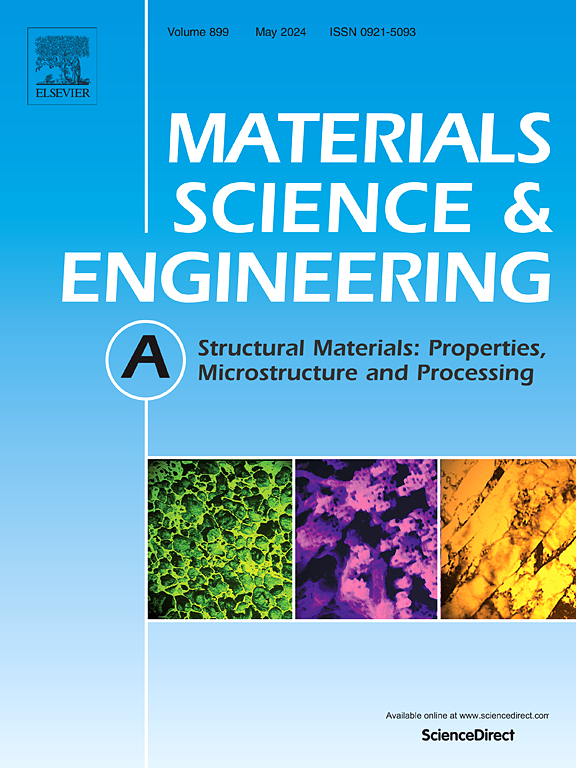体心立方介质熵合金在动态变形下的应变速率强化和相变
IF 6.1
2区 材料科学
Q1 MATERIALS SCIENCE, MULTIDISCIPLINARY
引用次数: 0
摘要
本文研究了Zr50Ti35Nb15体心立方(bcc)中熵合金在动态载荷作用下的力学性能和显微组织演变。准静态应变率增加到动态应变率,屈服强度从547 MPa增加到995 MPa,增加了约1倍,表明发生了强应变率硬化。动态加载下的应变率灵敏度为0.099,是准静态加载下的8倍。在动态加载而非准静态加载后,合金中由bcc相转变为面心正交α″相,α″相体积随应变速率增大而增大。强声子阻力效应和晶格摩擦增强了材料在动态变形下对位错运动的抵抗能力,使材料屈服强度显著提高。此外,局部应力波动导致的活化体积减小和应变速率增加导致的相界面增加是高应变速率敏感性的原因。本文章由计算机程序翻译,如有差异,请以英文原文为准。
Enhanced strain rate hardening and phase transformation in body-centered cubic medium entropy alloy under dynamic deformation
In this study, we have studied the mechanical properties and microstructural evolution of Zr50Ti35Nb15 body-centered cubic (bcc) medium-entropy alloy under dynamic loading. The yield strength increases approximately one-fold from 547 MPa to 995 MPa by increasing the quasistatic strain rates to the dynamic one, indicating a strong strain rate hardening. Furthermore, the strain rate sensitivity under dynamic loading is 0.099, which is eight times higher than that of quasistatic loading. Phase transformation from bcc to face-centered orthorhombic α″ occurs in the alloy after dynamic loading instead of quasistatic loading, and the volume of α″ phase increases with strain rates. The strong phonon drag effect and lattice friction enhance the resistance to dislocation motion under dynamic deformation, resulting in remarkable increase in yield strength. Moreover, the reduced activation volume due to local stress fluctuation and increased phase interface resulting from increasing strain rate are responsible for the high strain rate sensitivity.
求助全文
通过发布文献求助,成功后即可免费获取论文全文。
去求助
来源期刊

Materials Science and Engineering: A
工程技术-材料科学:综合
CiteScore
11.50
自引率
15.60%
发文量
1811
审稿时长
31 days
期刊介绍:
Materials Science and Engineering A provides an international medium for the publication of theoretical and experimental studies related to the load-bearing capacity of materials as influenced by their basic properties, processing history, microstructure and operating environment. Appropriate submissions to Materials Science and Engineering A should include scientific and/or engineering factors which affect the microstructure - strength relationships of materials and report the changes to mechanical behavior.
 求助内容:
求助内容: 应助结果提醒方式:
应助结果提醒方式:


